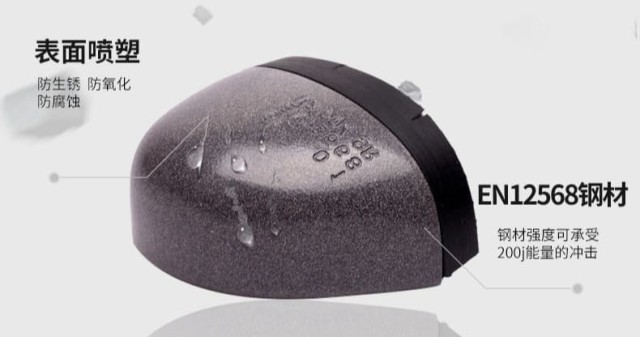When selecting safety footwear, the choice between alloy and steel safety toes often comes down to three critical factors: comfort, durability, and cost. While both materials meet ASTM F2413-18 safety standards, their differences in weight, design, and longevity can significantly impact workplace performance. This article breaks down the practical advantages of each to help distributors, brand owners, and bulk buyers make informed decisions.
Alloy vs. Steel Safety Toes: Key Comparisons
Weight Reduction and Its Impact on Worker Fatigue
Alloy safety toes are 30–50% lighter than steel, reducing leg fatigue during long shifts. Research shows that every pound added to footwear increases energy expenditure by 5–7%—a major consideration for warehouse or construction workers clocking 10,000+ steps daily.
Key Takeaway:
- Alloy toes minimize fatigue, improving productivity in high-mobility roles.
- Steel toes may be preferable for static heavy-load applications (e.g., foundries) where weight is less critical.
Strength Retention Under Heavy Loads
Both materials withstand the same 2,500–5,000 lb compression loads in ASTM tests. However, alloy toes distribute impact forces more evenly due to their thinner, more flexible design, while steel offers rigid protection against crushing hazards like falling machinery.
Consider:
- Alloy: Better for dynamic movements (e.g., ladder climbing).
- Steel: Ideal for static, high-impact environments.
Design and Functional Advantages
Toe Box Space and Ergonomic Benefits
Alloy caps are up to 30% thinner than steel, creating extra room in the toe box. This reduces pressure on bunions or wide feet—a common complaint among workers wearing steel-toe boots for 12+ hours.
Ergonomic Wins:
- Fewer blisters and hotspots with alloy designs.
- Steel toes may require a longer break-in period.
Corrosion Resistance in Harsh Environments
Alloy toes naturally resist rust in wet or chemical-heavy settings (e.g., food processing plants), whereas steel toes need coatings or frequent maintenance to prevent corrosion.
Durability Tip:
- For saltwater exposure or acidic conditions, alloy outperforms untreated steel.
Cost and Longevity Considerations
Upfront Costs vs. Total Cost of Ownership
Alloy safety toes typically cost 10–20% more upfront but last 2–3 years in moderate-use scenarios—comparable to steel. However, steel toes may require earlier replacement in corrosive environments, negating initial savings.
Cost Breakdown:
| Factor | Alloy Toes | Steel Toes |
|---|---|---|
| Initial Price | Higher | Lower |
| Maintenance | Minimal | Coatings needed |
| Lifespan | 2–3 years | 1–2 years (harsh conditions) |
Industry-Specific Use Cases
- Construction/Warehousing: Alloy toes reduce fatigue for mobile crews.
- Oil/Gas: Steel toes with anti-corrosion treatments handle extreme impacts.
Final Recommendation
For distributors and bulk buyers, alloy safety toes deliver long-term value through lightweight comfort and low maintenance, while steel remains a cost-effective choice for short-term, high-impact projects.
Ready to upgrade your safety footwear line? Partner with 3515—a trusted manufacturer for industrial footwear solutions tailored to your clients’ needs. From alloy-toe boots for all-day comfort to heavy-duty steel options, we provide scalable production without compromising safety or quality.
Products You Might Be Looking For:
Explore durable steel toe work shoes
View heavy-duty safety footwear options
Browse customizable steel toe boots
Related Products
- Wholesale Durable Breathable Safety Boots Custom OEM Manufacturer
- Athletic Safety Shoes with Dial Closure & Steel Toe for Wholesale & Custom Manufacturing
- Wholesale Customizable Suede Safety Boots - Puncture-Proof with Velcro Closure
- Wholesale Durable Safety Boots Manufacturer Customizable Steel Toe Work Boots
- Durable Steel Toe Safety Boots Wholesale & Custom Manufacturing
Related Articles
- Matching Men’s Work Shoe Safety Technologies to Workplace Hazards
- Steel Toe Work Boots: Balancing Safety and Comfort for Demanding Jobs
- How to Prevent Foot Discomfort Without Sacrificing Safety in Steel Toe Boots
- Steel Toe vs. Composite Toe Boots: How to Choose the Right Safety Footwear for Your Job
- How Safety Work Boots Engineer Protection: Features and Standards for Targeted Hazard Mitigation



















